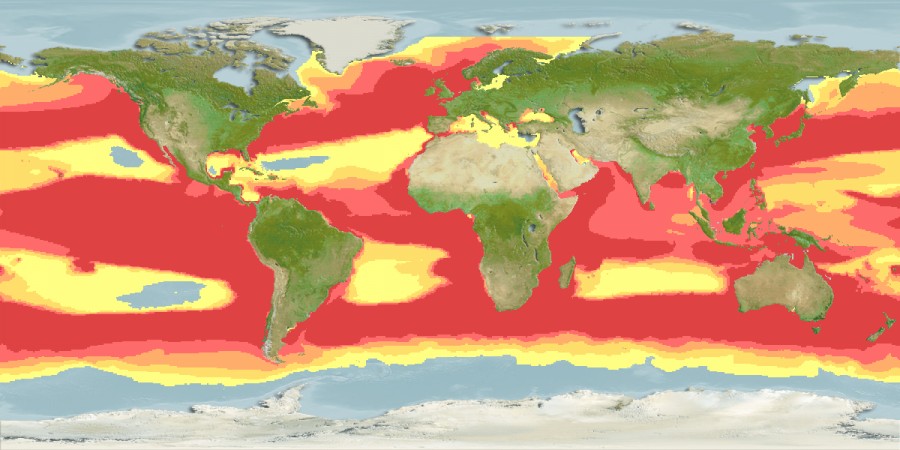The fish is found on slopes adjacent to deep water. The fish comes in for shelter and for seeking cleaner fishes. The fish is usually shy. However, it may become familiar with divers in some locations (Ref. 48637). The species often drifts at the surface while lying on its side. It swims upright and close to the surface. The dorsal fin often protruds above the water. The species has been filmed in 480 m depth with the help of a camera equipped with baits(Lis Maclaren, pers. Comm. 2005). The species eats fishes, mollusks, zooplankton, jellyfish, crustaceans and brittle stars (Ref. 4925, 5951, 48637). A live colony of the cirriped Lepas anatifera were found attached to the anterior portion of the sunfish's esophagus that was stranded in the south coast of Terceira Island, Azores Archipelago in 2004; an association with apparent advantages for the goose barnacles such as a regular intake of food and protection both from hydrodynamic hazards and from predators: but for the sunfish, it is not clear whether it is neutral, of advantage or causes feeding problems since the attachment may obstruct the sunfish's esophagus (Ref. 55063). The fish is registered as the heaviest bony fish and as the one with the most eggs in the Guinness Book of World Records (Ref. 6472). Environment: pelagic; oceanodromous (Ref. 51243); marine; depth range 30 - 480 m Climate: subtropical; 12 – 25°C (Ref. 37040); 76°N - 65°S, 180°W - 180°E
Source:
FishBase. Tortonese, E. 1990 . (Ref. 6952)

